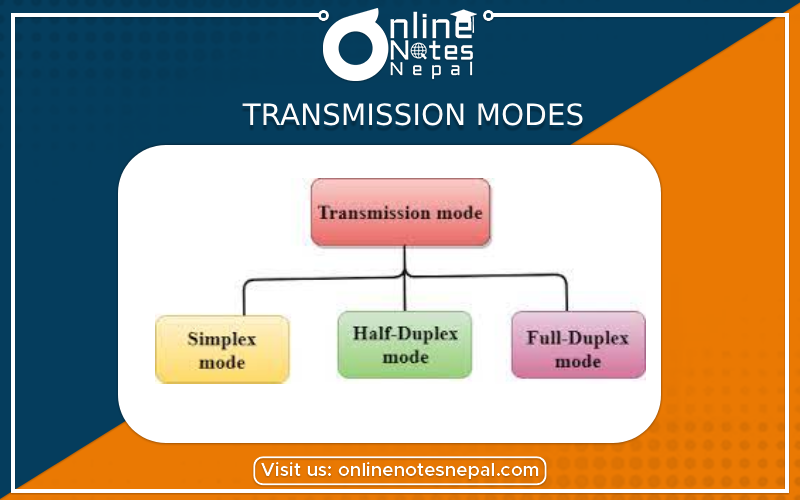Published by: Sujan
Published date: 18 Jun 2021

The directions in which data can be transmitted between any two linked devices are called Transmission Modes. it is of three types:—
Simplex transmission is unidirectional data transmission. Of the two linked devices, only one of them can send data and the other one can only receive data.
Half–duplex transmission is bi-directional data transmission, but the linked devices cannot send and receive at the same time. When one device is sending data the other can only receive.
Full-duplex transmission is bi-directional and the linked devices can send and receive data simultaneously. The linked devices can send data and at the same time receive data.
{PHOTO}
Transmission SpeedWhen the signals are transmitted between two computers, two factors need to be considered : —
(1) Bandwidth
(2) Distance.
Bandwidth is the amount of data that can be transferred through the underlying hardware i.e. the communication medium, in a fixed amount of time. Bandwidth is measured in cycles per second (cps) or Hertz (Hz). The bandwidth of the transmission medium determines the data transfer rate. Throughput is the amount of data that is actually transmitted between the two computers. Throughput is specified in bits per second (bps).
The information-carrying signals in transmission modes are of two types:—
(a) Analog signal
(b) Digital signal
Analog Signal: An analog signal is a wave that continuously changes its information-carrying properties over time.
The wave may vary in amplitude or frequency in response to changes in sound, light, heat, position, or pressure etc.
For example, a telephone voice signal is analog.
The intensity of the voice causes electric current variations.
Digital Signal: A digital signal is a wave that takes a limited number of values at discrete intervals of time.
Digital signals are non-continuous, they change in individual steps.
They consist of pulses or digits with discrete levels or values.
Digital signals have two amplitude levels called nodes.
The value of which is specified as one of two possibilities such as 1 or 0, HIGH or LOW, TRUE or FALSE, and so on.
{PHOTO}
Modulation:
Signals in transmission modes consist of two components:—the information signal and the carrier signal.
The transmission of any signal over some communication medium usually involves modulation of a carrier.
Prior to their transmission the information signal and the carrier signal are combined and the process of combining these two signals is called modulation.
• Characteristics of the carrier signal are varied in proportion to the amplitude of the information-carrying signal.
• Modulation results in the transfer of the signal information to a higher frequency carrier signal.
• In simple English terms, the information signal sits on top of the carrier signal and rides on it from the receiver to the transmitter.
Need for Modulation:
There are three primary reasons which necessitate modulation:
1. To make efficient use of the lines or media used for communication
2. To make radio communications feasible: The lower the frequency of the signal, the larger is the size of the antenna needed for transmission and reception. A signal of 10 kHz would require an antenna whose dimensions are in the range of a few kilometers.
3. To simplify signal processing: It is simpler to design electronic systems for narrow frequency bands.
Types of Modulation
Amplitude Modulation:—The amplitude of the carrier wave is modified in proportion to the data signal.The frequency and phase of the carrier signal remain unchanged.
Frequency Modulation:—The frequency of the carrier signal is modified in proportion to the data signal.The amplitude and phase of the carrier signal remain unchanged.
Phase Shift Modulation:—The phase of the carrier signal is modified in proportion to the data signal. .The amplitude and frequency of the carrier signal remain unchanged. For computer networks, generally phase shift modulation is used.
{PHOTO}
Modem
The modem is a device that has both a modulator and a demodulator. The modulator accepts data signals from the computer and modulates the carrier wave accordingly.
The demodulator accepts modulated carrier waves and regenerates the original data signal from it.
During data communication, the modem is attached to the computer, both at the sender and the receiver side.
Modems are used with all transmission media like RF modem for RF transmission and optical modem for transmission through fiber optics.
{PHOTO}